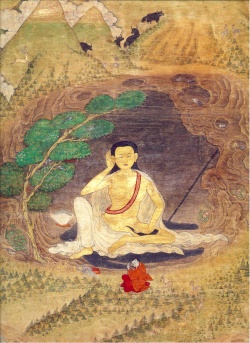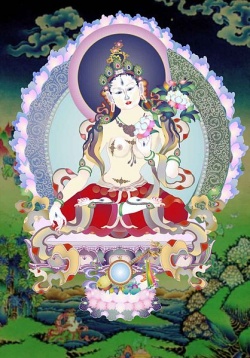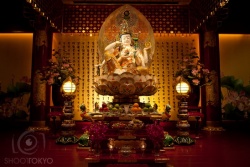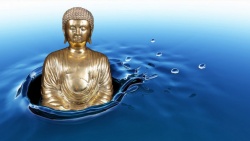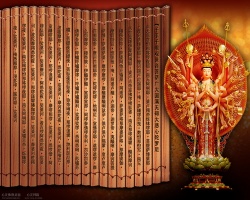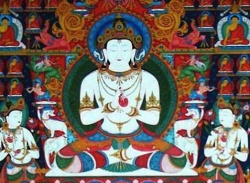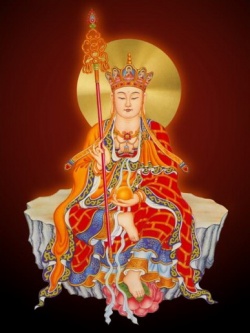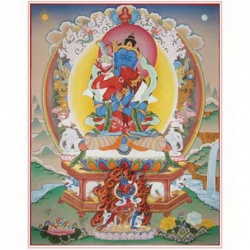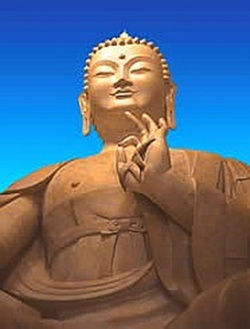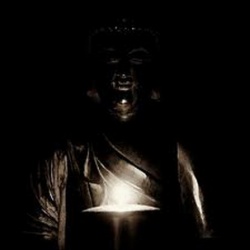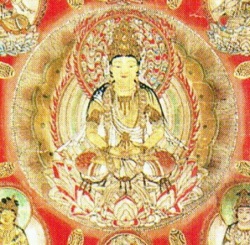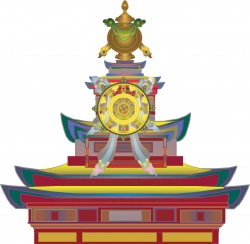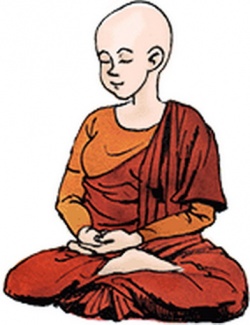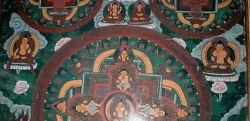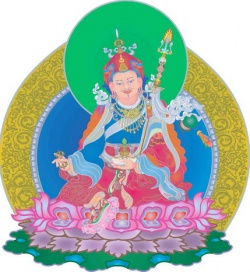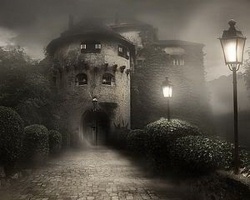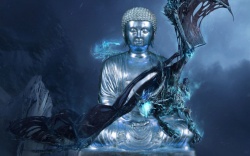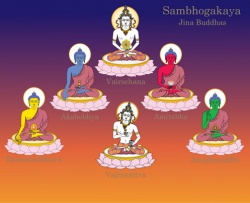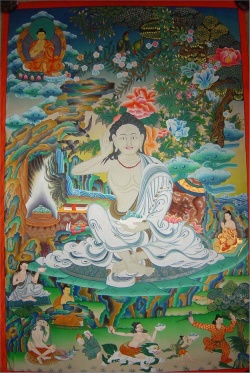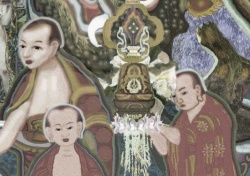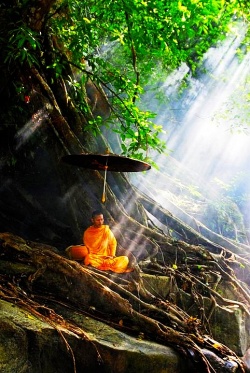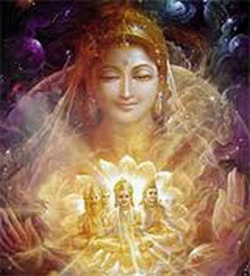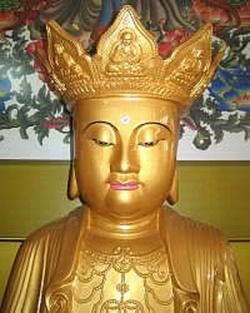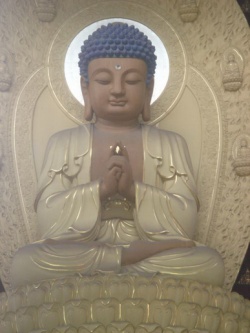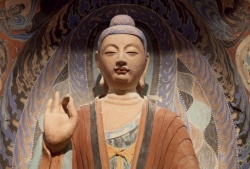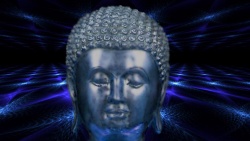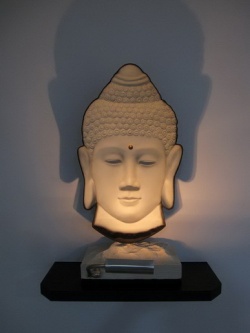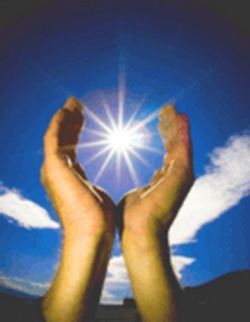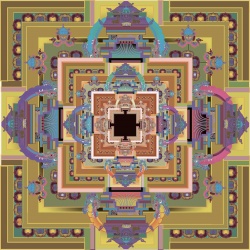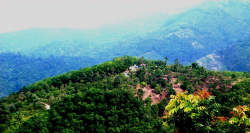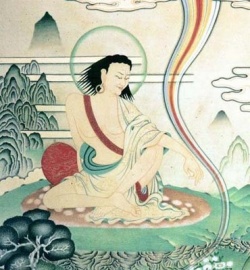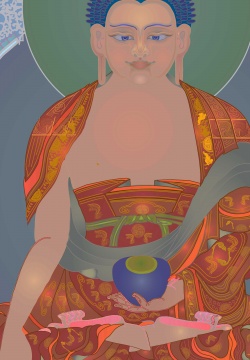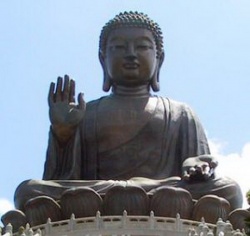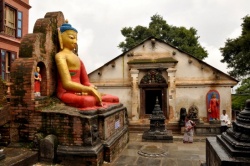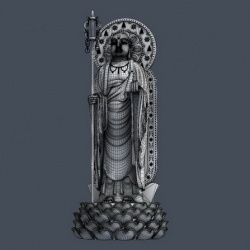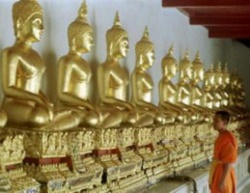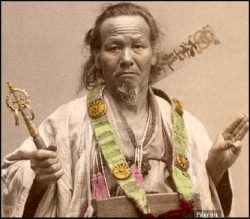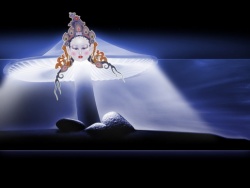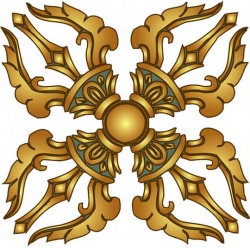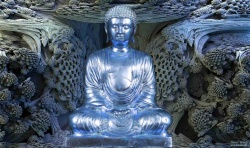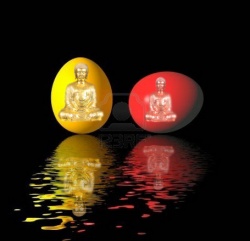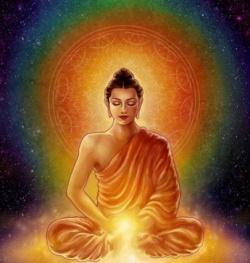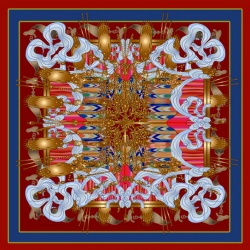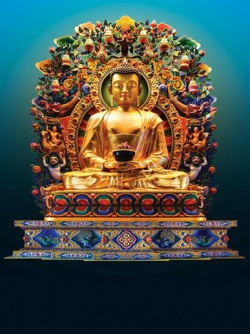Situ Penchen and the House of Sde dge: A Demanding but Beneficial Relationship
Situ Penchen and the House of Sde dge: A Demanding but Beneficial Relationship
Rémi Chaix, École pratique des hautes études & Center for Himalayan Studies, CNRS
JIATS, no. 7 (August 2013), THL #T5747, pp. 17-48.
© 2013 by Rémi Chaix, IATS, and THL
Abstract: Situ Penchen (1700-1774) is widely known as a prominent scholar of the eighteenth century and as the editor of Dergé’s xylographic edition of the Kangyur. High-ranking sprul sku (nirmāṇakāya) of the Karma Kagyü order, his life and career were also largely determined by his relation with the House of Dergé. Becoming one of its leading chaplains, at the age of 12, Situ Penchen was engaged in a long-lasting and demanding relationship, but one which also quickly turned out to be beneficial. His autobiography accurately records this “chaplain-patron” (mchod yon) relationship, and gives a clear insight into how Situ Penchen managed to deal with this duty, taking advantage of it, and handled successfully his patrons, his order and his personal projects (the Printing House, Pelpung Monastery…)
Introduction
Judging by the number of recent works, the Eighth Situpa (1700-1774) clearly emerges as one of the most preeminent intellectual figures of eighteenth-century Tibet. While he was mostly known for his grammatical treatise and his role in the Dergé Kangyur’s edition, the facsimile edition of his autobiography, published in 1968,[1] brought to light Situ Penchen’s rich life and works. Gene Smith’s introduction to the Autobiography and Diaries of Situ Panchen (Té Situr Böpa Karma Tenpé Nyinjékyi Rangtsül Drangpor Jö Dridrel Shelgyi Melong) vividly describes the context and outlines the main events of his life, but also prompts tibetologists to investigate new fields of Situ’s legacy. During the following decades, thanks to the research by Tibetan and Western scholars, much light was shed on Situ Penchen the grammarian,[2] translator,[3] editor,[4] painter,[5] and physician[6] in support of his title of “mahāpaṇḍita” (pendita chenpo). But a thorough reading of his account reveals that his life was guided by the two main roles he played simultaneously, i.e., trülku (nirmāṇakāya) of the Karma Kagyü order and chaplain (ula) of the House of Dergé. These distinct yet inseparable roles that he took on significantly influenced his life and career. On the one hand, even though he was never intended to become the hierarch of the Karma Kagyü order, circumstances forced him to face this great responsibility when he was only thirty-two, and greatly impacted his life. On the other hand, while everyone agrees that through his relationship with the House of Dergé, Situ Penchen was able to establish his see at Pelpung and the king Tenpa Tsering (1678-1738, r. 1713-1738) was able to complete the most accurate xylographic edition of the Kangyur, the history and the nature of their relationship remain unclear and their implications are still underestimated. In this paper I focus on the role of chaplain that Situ Penchen played but I also consider his role as a trülku since he became Dergé’s chaplain as a consequence of his being recognized as a trülku.
The history of the relationship between Situ Penchen and the House of Dergé must almost exclusively be traced from his own account. As Gene Smith noted the autobiography covers the first twenty-four years of his life, and the notes he kept on yearly almanacs (leto) were edited by his disciple and secretary Belo Tsewang Künkhyap just after his master passed away in 1774. The nature of this account and its strict chronological order reinforces its reliability and offers a unique chance to follow the precise course of this relationship, but it also makes the data collection and the analysis of the facts more complex. Moreover, most of Situ’s notations are so brief that the topic of the discussions with Dergé authorities, the content of the numerous letters he received or sent, are for the most part unknown. As a result, the real motivation for his actions almost always remains unclear and sometimes may lead to inaccurate and baseless interpretations. Certain passages of the Autobiography and Diaries can in some cases be clarified by Situ Penchen’s biography in the Dawa Chushelgyi Trengwa, which was composed by Belo Tsewang Künkhyap in 1775.[7] This (190-page) biography is not only an extensive and illuminating summary, but the selection of facts made by Belo also reveals, in some instances, which facts have been considered too inappropriate to be mentioned in the official “Golden Rosary” of the Karma Kagyü lineage.[8] Based on these two sources and taking into account these considerations, this study examines how the relationship formed between Situ Penchen and the House of Dergé came into existence, describes the nature and the implications of the commitment, and tries to discern what the interests and expectations of its protagonist were.
The Karma Kagyü Order, Situ Trülkus, and the House of Dergé
To understand the context and the origin of this relationship, in which the Karma Kagyü order (also called Kamtsang Kagyü) and the House of Dergé established through the Eighth Situpa a relationship based on more or less convergent interests and expectations, it is necessary to address some issues concerning Karma Kagyü order and the Situ incarnation lineage in seventeenth-century Kham.
Firstly, from the time of his official recognition as the Situ Trülku by the Karma Kagyü authorities, the child was vested with his incarnation lineage’s history and heritage. As this history and heritage was what made him “attractive” to the king of Dergé, here is a brief explanation.[9]
The founder of the Karma Kagyü order, Karmapa Düsum Khyenpa (1110-1193), was born in Kham (Treshö) and founded two of the order’s major institutions there: Kampo Nenang (1164) and Karma Gön (1184). After a succession of eight abbots, including Drogön Rechen (1148-1218) and Pomdrakpa (1170-1249), the abbatial throne of Karma Gön was held by Karma Pakshi’s (1206-1283) younger brother, Chögyel. Then, for more than ten generations, the abbots of Karma Gön were selected from among his descendants. Some of these abbots were granted titles and seals from the Yuan authorities, including the Situ title in the early fourteenth century. After the transmission of authority from uncle to nephew, Chökyi Gyeltsen (1377-1448), who is recognized as the first of the Situ’s incarnation lineage, ascended the throne towards the end of the fourteenth century. In 1413, by virtue of his status in Karma Gön, the Ming emperor, Chengzu (r. 1403-1424), granted Chökyi Gyeltsen the title of “anointing, pure and merciful, penetratingly wise, national preceptor” (guanding yuantong miaoji guoshi), along with a crystal seal and an edict.[10] After he relinquished the throne, the Situ title was borne by his successor and nephew, Shakya Zangpo, whose own nephew and great-nephew were later recognized as the Second and Third Situ Trülku.
The recognition of the Situ Trülku among Chögyel’s descendants came to an end with the fourth incarnation, Mitruk Chökyi Gocha (1542-1585?), recognized by Karmapa Mikyö Dorjé (1507-1554). The Fifth Situpa, Chökyi Gyeltsen Chima (1562/86?-1632/57?), officially received his national preceptor (guoshi) title, his seal, and his hat the day he received his full ordination from the Ninth Karmapa in Tsurpu. He then acted as the order’s ambassador in Kham and was invited by the king of Jangsatam, preparing the ground for the Tenth Karmapa’s exile in the 1640s.
The Sixth Situpa, Chögyel Mipam (1633?-1682), was recognized by the Tenth Karmapa in the family of Künga Püntsok, the second abbot of Dergé’s royal monastery.[11] This recognition formed the first link between the House of Dergé and the Situ Trülku. But not long after his enthronement in Karma Gön, Chögyel Mipam had to abandon his monastery because of Guśri Khan’s (1582-1654) military expedition in Kham (1639-40) and joined the Tenth Karmapa in his exile in Jangsatam. On the way, he stayed a while in Dergé, where he entrusted the royal family with some religious objects (tensum) until his return. He also visited the hermitage of Penjor Gang, where he had been invited by some lamas, including an uncle of Situ Penchen (Künga). According to Situ Penchen,[12] the Sixth Situpa predicted he would be reborn here and become the “owner” (dakpo) of the hermitage’s books and religious objects. He also mentions that the Sixth Situpa, frustrated by the situation in Jangsatam, asked the Karmapa permission to leave his body and take rebirth as someone as powerful as the Chinese Emperor in order to benefit the Karma Kagyü teachings. The Karmapa strongly opposed this plan. The Sixth Situpa never returned to northern Kham and passed away in Yunnan.
The Eleventh Karmapa recognized his reincarnation as the son of the Lingtsang’s chief. But Gönpo Lhündrup, a follower of the Sakya Ngor tradition, refused to give his son over to the Karma Kagyü order. The child, Lekshé Mawé Nyima (1683-1698), died at a young age and was never entrusted with the Situ title. Situ Penchen even thought that it was not necessary to include him in the incarnation lineage of the Situ Trülku.[13]
In addition, Situ Penchen also states that the first Situ Trülku belongs to an extensive lineage of incarnation, in which he includes some Indian and Chinese charismatic figures such as Ḍombhi Heruka and Gyimshang (alias Jampel Sangwa) as well as Marpa Chökyi Lodrö (1012- 1097) and a manifestation lineage (namtrül rimgyü), among whom figures Gomchung Sherap Jangchup, Drogön Rechen, and Rigowa Ratna Bhadra (1281-1343).[14] This lineage history clearly gives more prestige to the Situ incarnation and bestows on him a long-standing and charismatic spiritual heritage.
Secondly, one has to consider the striking fact that during the seventeenth century most of the highest ranking Karma Kagyü trülkus were born in Eastern Tibet: the Tenth Karmapa (1604) and the Seventh Zhamarpa (1631) in Golok, the Fifth Pawo (1649) in Tau, the Sixth Gyeltsappa (1659) in Gyeltang, the Eleventh Karmapa (1676) in Markham, and finally the Sixth and the Seventh Situpa in Dergé and Lingtsang, respectively. The concerted effort to identify their highest trülku in this region suggests that the order believed that conditions there were favourable. This “attractiveness” must have been due to the Karma Kagyüpa’s political situation in Central Tibet causing the fall of the Tsang Depa in 1642 and the seizure of most of their monasteries by the Geluk authorities.
At the turn of the eighteenth century the order faced again an unexpected situation. During an eight-year period, the five leading hierarchs passed away,[15] creating a power vacuum that threatened to destabilize the order. Before he passed away in 1702, the Eleventh Karmapa had just recognized and enthroned the Eighth Zhamarpa (1695-1732) and convinced the Desi Sanggyé Gyatso (1653-1705) to allow the young boy to be enthroned at his monastery, Yangpachen. Thus, the pressure on the two regents, Treho Zhapdrung bstan 'dzin dar rgyas and Goshri Döndrup Nyingpo (b. 1664), was indeed very high.
Following the instructions of tertön Migyur Dorjé (1628-1708), the two regents identified the incarnations of the Eight Situpa and the Twelfth Karmapa in Dergé. In 1704 the Eighth Situpa was officially recognized in Penjor Gang, in a family of Lingtsang’s old nobility, the Alo clan. This family had a long-standing connection to the Karma Kagyü tradition, and some of the young boy’s uncles had attended the Sixth Situpa’s visit some years earlier. For his part, the Twelfth Karmapa, Jangchup Dorjé (1703-1732), was born to descendants of the Second Karmapa’s brother and was recognized in 1706.
Lastly, the Kingdom of Dergé emerged during the 1630s and expanded its territory at the occasion of Guśri Khan’s military expedition against Beri Dönyö Dorjé (d. 1640). Sanggyé Tenpa (r. 1675-1710), king and abbot of Dergé since 1675, called upon charismatic lamas of the Sakya Ngor and the Nyingma traditions and patronized the foundation of new institutions (such as Dzokchen in 1685), as his predecessors had done. At the end of the seventeenth century, he developed an interest in expanding the influence of Dergé in western areas where the Drukpa and Karma Kagyü benefited from a strong presence, and he was therefore interested in taking Kagyü lamas as his court chaplains. The biographies of Seula Jamgön Ngawang Gyeltsen (1647-1732),[16] a Drukpa Kagyü lama from Bhutan (Drukyül) who stayed in Dergé for almost six years, confirms this “multi-sectarian” policy he promoted in the kingdom to win the support of the theses orders. The support for Karma bka’ bgyud institutions could also find its justification in a traditional account mentioning that the Seventh Karmapa, Chödrak Gyatso (1454-1506), had made a prophecy to Ngu Chödor, an ancestor of Sanggyé Tenpa, that his descendants would obtain dominion over a large territory in the future.[17]
Negotiations and Formalization of the Relationship
The fact that the first and the fourth ranking Karma Kagyü trülkus were born in Dergé (respectively in 1703 and 1700) presented the king with the opportunity to secure a link with another major order. Although the sources are not explicit, it appears that Sanggyé Tenpa took the two children “hostage” from the time of their official recognition, restricting their movements within the kingdom and in Lhatok. Furthermore, Karma Kagyü authorities, unable to go against the king’s decision, probably saw potential in this situation and were hopeful that the House of Dergé would patronize their order. However, at this early stage, the terms of their agreement had yet to be codified. It seems that one of the key issues to be discussed by the two parties were Sanggyé Tenpa’s conditions to grant permission for the Karmapa to leave Dergé and assume his post in Tsurpu.
Situ Trülku’s education was taken over by his maternal uncle, Lama Künkhyen (d. 1730), even before his official recognition by Tsurpu’s steward, Pendé, and Khamnyön Lama[18] in 1704 (wood monkey year). When he was only six, Künkhyen (d. 1730) decided to sideline the child’s father Ngawang Tsering, and keep him away from women except his mother Traguma. Thus, the trülku started his training at Penjor Gang hermitage. Nevertheless Künkhyen had already taught the child to read, write, memorize daily practices, and propitiate some deities as well as bestowing on him many important consecrations (Hayagrīva [ Tamdrin ], Vajravārāhī [ Dorjé Pakmo ], Amitāyus [ Tsepakmé ], Saṃvara [ Demchok ], Akṣobhya [ Mitrukpa ], Vairocana [ Nampar Nangdzé ], among others).
During the summer of the fire dog year (1706) the second delegation, composed of Tsurpu, Yangpachen and Treho Zhapdrung’s emissaries, came to Dergé to officially recognize the Twelfth Karmapa and offer the Eighth Situpa’s extended name (tsenring) and a long life prayer (ringtsö mönlam) composed by the Eighth Zhamarpa (1695-1732).[19] Rounds of negotiations between Karma Kagyü authorities and the House of Dergé seem to have started in earnest at that time.
The first meeting between the two trülkus had been scheduled for the second month of the fire pig year (1707). On the way to Jopo Nenang, Situ Chökyi Jungné was granted his first audience with the king of Dergé, in his Chakra Samdruptsé palace. Sanggyé Tenpa did not ask for a hand blessing (chakwang) but assured him of his support in the future. During the meeting the king also mentioned the religious objects the Sixth Situpa had left under Dergé’s protection that he had not yet returned. The two young trülkus met on the tenth day of the second month, but it seems that the real purpose of Situ’s three-week stay in Jopo was an occasion for the emissaries and the teachers of the two trülkus to discuss issues concerning their future.
Not long after he came back to Penjor Gang, an emissary from Khamnyön Lama presented the Eighth Situpa with an invitation to come to Karma Gön. Traditionally, the Situ Trülku had to assume his post at Karma Gön, but for some reason, that remains unclear to me, this did not happened with Situ Penchen. Among the many reasons one can invoke, the oral law stipulating that a trülku born within the Dergé kingdom’s borders was not allowed to leave the kingdom without the king’s approval may have been the explanation. From Situ’s autobiography, one also sees that the Sixth Situ Trülku had a tense relationship with some of the main Karma Kagyü monasteries of Nangchen and Lhatok (Zurmang Dütsitil, Namgyeltsé, and Karma Gön). In any case, Karma Gön never became Situ Penchen’s primary or secondary see.
In order to travel outside the boundaries of the kingdom, Situ Chökyi Jungné’ uncles (Künkhyen and Chöwang) requested permission (gongtröl) from the king, which he finally granted. This first trip was a unique opportunity to meet the old tertön Migyur Dorjé and to obtain religious transmissions from his main disciples in Dütsitil for about a month. The Fifth Zurmang Drungpa Tenpa Namgyel, Zurmang Chetsang Sungrap Gyatso (d. 1729), and tertön Rölpé Dorjé (1684?-1719) bestowed on him not only the main transmissions (empowerments [wang], reading transmissions [ lung ], permissions to practice [ jenang ], and spiritual instructions [tri]) from the Zurmang Nyengyü and the Rechung Nyengyü but also those from the collected works of charismatic figures of the Karma Kagyü lineage (including Gampopa (1079- 1153), Urgyenpa, and the Seventh and Eight Karmapa) and the Nyingma tradition (Ratna Lingpa (1403-1479), for example). After that, Situ Chökyi Jungné spent a month in Karma Gön and slowly made his way back to Penjor Gang. He then pursued his studies under the guidance of Lama Künkhyen, who seems to have prepared Situ Chökyi Jungné for his trülku role by trying to make him work and practice hard and also to obtain as much transmissions and benedictions as possible from the most charismatic Karma Kagyü and Nyingma masters in activity.
During the eleventh month of the earth mouse year (1708), Situ Chökyi Jungné met for the second time the Twelfth Karmapa, with whom he had a friendly relationship while the negotiations between Karma Kagyü emissaries and the House of Dergé were still going on. During that winter, when the Eighth Situpa fell critically ill, Sanggyé Tenpa dispatched his personal physician, Lharjé Bumlu, and sent precious pill (rinchen rilbu), said to have contributed to his recovery.
Sanggyé Tenpa passed away on the tenth day of the first month of the iron tiger year (1710). The demise of the king was considered by Situ Penchen as a “great disaster” (chakgo shintuché) for the Karma Kagyü order. His successor and nephew, Sönam Püntsok (d. 1714), was less well-disposed and the negotiations seemed to get more complicated. Furthermore, Situ Penchen blamed the new sovereign for having used half of the religious objects, the Sixth Situpa had left under Dergé’s protection, as consecratory supports for a stupa (chörten, stūpa) in Dokhoma and had lost the rest.[20]
By the end of 1710, as the new king was passing near Penjor Gang, the Eighth Situpa went to his first solemn meeting with Sönam Püntsok at Gönkyé. In the middle of the field under the fortress, they performed a tea offering ceremony, during which Situ Chökyi Jungné presented to the king a ceremonial scarf. In return Sönam Püntsok offered two brick of tea (jabak) along with a fox hide and asked the young trülku to recite a dedication prayer. In the beginning of the iron hare year (1711) the Twelfth Karmapa also went to meet the king at Chakra and at Dergé Gönchen. Negotiations certainly progressed with the arrival in the eighth month of the same year of three emissaries from Central Tibet.[21]
The next year the talks concerning the two trülkus reached their final phase with rounds of discussions with the delegation led by the abbot of Yangpachen, Karma Namdröl, and Depa Tendar.[22] In the fourth month of the water dragon year (1712), hence more than six years after the Karmapa’s recognition, a final agreement was reached. The king invited the Karmapa to Lhalung Khuk, his summer camp, to formally seal the commitment of a chaplain-patron (chöyön) relationship between the Karmapa and the House of Dergé. On the twenty-first of that auspicious month, the festivities started, with a formal meeting between the two trülkus, the king and his nephew, Tenpa Tsering, in the official tent (gurchen). The twenty-eighth, after a week of meetings and grand celebrations, the two Dergé lords offered numerous gifts to the Karmapa and Situ Penchen before their departure for Central Tibet. Situ Penchen remembered that on this occasion Sönam Püntsok and his nephew asked him for a hand blessing.
The terms of the agreement concerning the Eighth Situpa are not explicitly known. But one can surmise that Tsurpu’s emissaries consented his future as Dergé’s chaplain in order to obtain the “release” of the Twelfth Karmapa. Situ Penchen and the House of Dergé were from then on engaged in a long-lasting relationship.
A Demanding Commitment
Situ Penchen’s first trip to Central Tibet, from 1712 to 1715, seems to have been one of the most fascinating and rewarding experience of his life. It was a good opportunity not only to explore the rich heritage of the order’s monasteries (Tsurpu, Yangpachen, Nenang, and others) and the main shrines in Lhasa (Lhasa), but also to get the same education as the Twelfth Karmapa, from the Eighth Zhamarpa, Treho Zhapdrung, Goshri Döndrup Nyinpo and the other Karma Kagyü masters. In 1713 (water snake year), after he took his first ordination, Situ Penchen was officially granted his ceremonial hat (uzha) and his predecessor’s golden seal and clothes. His training then started and he received the main empowerments, reading transmission (especially the one of the Kangyur), and spiritual instructions of the Karma Kagyü tradition. In order to respect his commitment to the king of Dergé, he concluded his stay in Central Tibet, returning to Dergé after three fruitful years of training.
When he arrived in the kingdom, he met with Tenpa Tsering (r. 1713-1738, the new king and abbot of Lhündrup Teng, to whom he presented gifts with a ceremonial scarf, and asked for a hand blessing. In return the king also gave him some presents. Situ Penchen then reached Penjor Gang, where he continued his studies and practiced his masters’ religious instructions. The following years he visited neighboring areas and started his career as teacher and ritual performer in the Karma Kagyü institutions. For that period Situ Penchen only mentions one meeting with the King in 1719 at Lhado, during which the sovereign requested a hand blessing for his first son, Sönam Gönpo (d. 1761) but not for himself. The House of Dergé does not seem to have interfered with his activity until 1720. In that year, while touring in Nangchen, Situ Penchen was informed that the Seventh Dalai Lama (Talai Lama) would stay near Partang on his way from Kubum to Lhasa. He went there and met the young Dalai Lama, with whom he established a friendly relationship. The Dalai Lama’s father then suggested that Situpa come with them to Lhasa. But as Tenpa Tsering had not been solicited, Situpa had to refuse. He then thought that he might at least accompany them for two or three days, but the king’s ministers, Getok Zunggyel and Birluk, were opposed to it.[23] So he continued his tour in Nangchen, where he gave for the first time the Kangyur’s reading transmission (winter 1720 - spring 1721).
Frequently informed of the Karmapa and the Zhamarpa’s activity (pilgrimages, etc.) in Central Tibet, Situ Penchen’s frustration increased, so he decided to meet Tenpa Tsering and to ask the latter if he might join his masters. At this occasion he also went to the royal palace of Trashi Chödzong at the request of the queen Tsewang Tso (d. 1737), where the chaplain Trashi Wangchuk (d. 1727) taught him Indian and Tibetan philosophy. Finally, Dergé authorities agreed to his journey and even sponsored him with a large amount of tea (around 300 tea units [ ja poptsé ]).
During his second stay (1721-1725) in Central Tibet far from the responsibilities he had to assume in Kham, Situ Penchen pursued his training in traditional sciences and Karma Kagyü’s liturgy. Thanks to his meeting in 1720 with the Seventh Dalai Lama, the minister Ngapöpa Dorjé Gyelpo (d. 1728) introduced Situ Penchen to political and religious leaders in Lhasa. But he also realized that Dergé’s control upon him did not weaken with distance. At the end of 1722 (water tiger year), on their way to Ngor Ewam monastery, Dergé’s prime minister, Getok Zunggyel, and his retinue came to Tsurpu, to present letters from the House of Dergé asking Situ Penchen to come back quickly. On that occasion the Eighth Situpa requested the minister’s permission to study epistemology, but Getok Zunggyel disapproved of his plan. The next year, when the minister passed through Tsurpu on his way back to Dergé, Situ Penchen asked him if his relatives could stay a little longer. The minister’s answer was again negative, possibly with the intention of hastening Situ Penchen’s return to Dergé.
But it seems that Situ Penchen was in no hurry do so. While making a pilgrimage to Tsang region in 1723, the other father and sons (yapsé, namely the Karmapa, the Zhamarpa, and the Gyeltsappa) asked him to join them on their trip to the Kathmandu Valley. During this stay Situ Penchen found a unique opportunity to study Sanskrit grammar with the most learned Newar scholars, to obtain and read Sanskrit texts, and to improve his knowledge in healing rituals. Then the father and sons proceeded on a long pilgrimage to Kailash (Gang Tisé) and reached Tsurpu at the end of the wood dragon year (1724). It is only in 1725 that Situpa made his way back to Dergé, though pilgrimages and retreats in Kongpo and Pobo took him more than a year. In order to make his patrons be patient, he sent his steward Chödar ahead. This move seems not to have been found satisfying, and, in the fifth month of the fire horse year (1726) two envoys from Dergé came to join him in order to speed up his return.
Chaplain and trülku
During all these years of “trülku training,” Situ Penchen, coached by his uncle, acquired not only the skills and the legitimacy necessary for his role but also the awareness of his responsibility towards his masters and his order to preserve and transmit the Karma Kagyü heritage. From that time on it appears that the guidelines and the main goal of his life, based on his endless efforts and his competences, were to preserve, to transmit, and to enrich his order’s material and nonmaterial heritage. He seems therefore to have felt at that time that the House of Dergé’s control over his training and movements, due to his chaplain commitment, constituted a serious handicap in his Karma Kagyü trülku’s mission.
In the eighth month of the fire horse year (1726), by the time of Situ Penchen’s return, the House of Dergé’s interest in its young chaplain started to take shape. The potential chaplain in whom they had a vested interest now appeared attractive and promising. Firstly, he was considered one of the Karma Kagyü lineage holders, therefore respected by many lay and monastic communities in Kham. He had regained his Situ Trülku charisma, enhanced by the red hat prestige ceremony, which inspires attraction and devotion of the religious, laymen, and local chiefs. He also had already mastered the traditional sciences, especially astro-divination, medicine, and grammar. He had been introduced to the inner circles of power in Lhasa. Finally he had travelled throughout Tibet and Nepal, building a broad network of acquaintances.
So, despite the frustrating delay of Situ Penchen’s return, Tenpa Tsering, the queen, ministers, members of the House, and their main chaplain, Trashi Wangchuk, gave him a warm welcome with all respect due to his trülku and chaplain’s status. Situ Penchen bestowed on them longevity consecrations (tsewang gyatsa) and finally reached Penjor Gang. In the following days he presented a request to the king, along with a painting he had made of The Eight Great Mahasiddhas, for a place to establish Situ Trülku’s new see.[24] The king granted Situ Penchen the site of Pelpung, where previously a Drigung Kagyü monastery stood, and work began in the second month of the fire sheep year (1727). Besides Tenpa Tsering’s numerous gifts, the grant of corvée labor (ulak) to raise the walls and the fact that the king had dispatched the minister Chökyong Lodrö as the project manager, Situ Penchen had to go in search of supplementary financing. He went on several fundraising tours to collect, what he rather poetically called flower alms (metok sönyom), among secular and religious communities – mostly followers of the Karma Kagyü tradition. At each stop of his tour, he generally performed public blessings (tromwang, i.e. Avalokiteśvara [ Chenrezik ], Mañjuśrī [ Jampeyang ], Bhaiṣajyaguru [ Sanggyé Menla ], Maitreya [ Jampa ], or Sarvavid’s [ Künrik ] permission to practice) and the red hat ceremony during the day, and private blessings and empowerments (gerwang, kyenselgyi wang, among others) in the evening. During these tours Situ Penchen also asserted his authority on the order’s monasteries, and he took charge of the young Karma Kagyü trülkus’ training after the passing away of the two leading masters, Khamtrül Künga Tendzin (1680-1728) and Zurmang Chetsang Sungrap Gyatso.
He frequently returned to follow the progress of work in Pelpung and to perform rituals for members of the House of Dergé. They mainly asked him for longevity consecrations. In 1729, for the first time, he was consulted by Tenpa Tsering about sending troops against Chakdü (Nyarong). He gave his answer after making a yangchar divination.[25] During the eighth month of the earth bird year (1729), Situ Penchen invited all the members of the royal family and the political and religious authorities to the consecration rituals of Pelpung’ main temple and to celebrate, with great festivities, the Situ Trülku’s new see.[26]
Invited by Lijiang authorities, and with the approval of Tenpa Tsering, Situ Penchen went on a tour of the Karma Kagyü institutions in southern Kham in the iron dog year (1730). Even though he did not mention it clearly, Situ Penchen’s journey must also have been linked with his patron’s greatest project, the xylographic edition of the Kangyur. Indeed, a part of the textual sources for the Jangsatam edition, supervised by the Sixth Zhamarpa in the beginning of the seventeenth century, were still there.
In the first month of the iron pig year (1731) Situ Penchen received an order to come to Gönchen to contribute to the proofreading of the Kangyur. He complied immediately. After official celebrations he started to revise and correct several tantras, sometimes checking the translation from the Sanskrit versions. He stayed working at Gönchen for four months before he was able to resume his own activity in Pelpung and with the religious communities of Lhatok and northern Dergé. He spent the winter months, from the eleventh month of the iron pig year (1731) to the third month of the water mouse year (1732), in Gönchen to continue his proofreading work. He returned to his monastery only in the first day of the fourth month. There he received Tenpa Tsering’s order to compose the table of contents (karchak) of the Kangyur. This decision was not as obvious as it might appear today. The idea to take on this project had been raised by Sang [page 29] gyé Püntsok (1649-1705), the former abbot of Ngor Ewam (1686-89), who later became Sanggyé Tenpa’s chaplain. Even though the block print edition project was officially launched in the seventh month of 1729, it was in 1718 that Tenpa Tsering had ordered the realization of woodblocks of several sūtras (different versions of the Sherchin [ Prajñāpāramitā ] and the Pelpoché [ Avataṃsaka ]) of the future Kangyur xylographic edition (parma).[27] This work was under the supervision of his Ngorpa chaplain, Trashi Wangchuk. After the latter’s passing away, he was succeeded in his chaplain’s role by Trashi Lhündrup (1672-1739; abbot of Ngor Ewam, 1722-1725), who naturally became the supervisor of the project. So, one might have expected that he be entrusted with the redaction of the table of contents, a prestigious work. One may wonder what Tenpa Tsering’s intentions were by entrusting the task to Situ Penchen? No answer is provided by Situ Penchen, but it seems that the Ngorpa chaplain Trashi Lhündrup was very upset by this choice and decided, as he was still the supervisor, to edit only five of the eight chapters of the table of contents Situ Penchen had composed.[28] Without specific evidence, we may try to explain the king’s choice, if reason has played a role in his decision, by a few facts that give legitimacy to Situ Penchen: he had received and given several times the reading transmission of the Kangyur; he mastered Sanskrit and Tibetan grammar; he was a high ranking trülku; and he belonged to an order among which several hierarchs were famous for their contribution to the edition of the Tibetan Buddhist Canon (just to mention a few: the Fifth Karmapa’s role in the Yongle edition and the Sixth Zhamarpa’s role in the Jangsatam edition of the Kangyur).
In mid-1732, the Eighth Situpa went to Amdo and met up with the Karmapa and the Zhamarpa on their way to Beijing (Pechin). Situ Penchen suggested that they should take him as their servant (zhapchi). They refused his offer, but entrusted him to protect the Karma Kagyü tradition and to make a xylographic edition of the Karma Kagyü liturgical texts (chöchö) in Pelpung.[29] On his way back to northern Dergé, Situ Penchen acted as a peacemaker for the first time. He executed a ritual for warring parties to lay down their arms and engage in a peace agreement.
As the Karmapa and Zhamarpa passed away prematurely in China at the end of 1732, Situ Penchen became the order’s highest ranking hierarch and was therefore entrusted with the heavy responsibility of finding, enthroning, and bringing up their reincarnations. But he could not focus exclusively on his new role, as he had to honor his chaplain’s commitment and in particular to complete the corrections of the Kangyur edition. During the celebrations for the consecration of the xylographic blocks in the second month of the wood tiger year (1734), Situ Penchen bestowed upon the royal family the consecration of Saṃvara, and the next day, a longevity consecration to six ministers and Vajravārāhī’s consecration to a large assembly headed by the king. Finally, on the twenty-first he bestowed the consecration of Gyelwa Gyatso and received a large number of presents.[30] Maybe due to Situ Penchen’s new status, the requests and marks of respect from the House of Dergé noticeably increased, and we can also remark that he began at this point to give them tutelary deity’s empowerments, becoming in a way their tantric master.
In mid-1734 the king Tenpa Tsering let Situ Penchen go to Central Tibet to consecrate the Karmapa and Zhamarpa’s funerary stupas and to give his instructions to Tsurpu and Yangpachen’s authorities, as well as to train the young trülkus: the Seventh Pawo, the Fifth Treho Zhapdrung, the Sanggyé Nyenpa and others. Situ Penchen also took this opportunity to meet with Lhasa political and religious authorities, especially with Polhané (1689-1747). The sovereign of Tibet, who was carrying out his project to make the Tengyur xylographic edition, sought the services of Situ Penchen and offered him Sanskrit texts. Denigrating Dergé he argued that Central Tibet had so much more to offer to a brilliant scholar like him.[31] Although Situ Penchen took the books, he declined the generous offer and remained faithful to his Dergé patrons.
As he was not very confident in the Seventh Gyeltsappa (1699-1765) and had to leave Central Tibet, he entrusted his master and friend Katok Tsewang Norbu (1698-1755) with the duty of watching over, and leading the research to find the Karmapa and Zhamarpa reincarnations, and of informing him of the progress.
Back in Dergé, Situ Penchen resumed his role as chaplain and spent a long time performing rituals for the members of the Dergé family, who were becoming more and more generous. At the beginning of the earth horse year (1738) Situ Penchen was summoned to come to the capital as Tenpa Tsering was critically ill. Despite numerous consecrations, blessings and rituals, the king passed away after three months of agony on the third day of the sixth month of the earth horse year. The funeral ceremonies were performed by the two main chaplains, Situ Penchen and Trashi Lhündrup until the eighth month. After the ceremonies the queen mother Tsewang Lhamo (d. 1744) honored Situpa with lavish gifts and became his disciple, staying for long periods of time in Pelpung to receive his teachings.
Without changing the terms and conditions of their relationship, the passing away of Tenpa Tsering, followed the next year by Trashi Lhündrup’s death, strengthened the status of Situpa as chaplain. Even though the Ngorpa chaplain was succeeded by Penden Chökyong (1702-1760) in 1740, the successors of Tenpa Tsering, the other members of the House, and the local authorities of the kingdom were relying more and more on Situ Penchen’s numerous skills (ritual performer, divination, physician, editor, among others). This greatly reduced his availability for his personal duties.
During the following years Situ Penchen’s life resembles a race against time to meet with the demands of his Dergé patrons, those of the religious communities he was in charge of and those of the sponsors of the Kagyü order all over Kham as well as keeping up his lineage holder’s duties. Thanks to the help of Katok Tsewang Norbu in Central Tibet, he was able to supervise the recognition and education of the Thirteenth Karmapa, Düdül Dorjé (1733-1797). Concerning the Ninth Zhamarpa, Situ Penchen blamed the Seventh Gyeltsappa for his untimely passing away in 1740 and personally took charge of the recognition and education of the Tenth incarnation. After his fourth stay in Central Tibet (1745-1749), Situ Penchen brought Zhamar Mipam Chödrup Gyatso (1742-1792) with him to Dergé to ensure the training of his protégé. Following Tsewang Norbu’s wishes he even tried to install him on the throne of Katok in 1752, but this was thwarted by a coalition of monks from Golok and Rongpo, led by Drimé Zhingkyong (1724-1787?).[32]
The sicknesses and deaths of several members of the House of Dergé (Püntsok Tenpa [d. 1751] and Jemo Tsering [d. 1751], Sönam Gönpo, Chökyong Gönpo [d. 1767], and Trashi Wangmo [d. 1768]) took up much of his time and constantly forced him to change his plans. Despite this, he was allowed to travel again to Lijiang (1759) and to Central Tibet (1762-63) and he took on his lineage holder’s responsibility very seriously.
He spent the last years of his life transmitting his knowledge and experience to his disciples at his monastery and in the neighboring regions (mainly Lhatok and Nangchen). He even had the satisfaction of welcoming the Thirteenth Karmapa to Pelpung (1771-1772) and introducing him to the king of Dergé, Lodrö Gyatso (1723-1774), and the other members of the House of Dergé during the New Year festivities of the water dragon year (1772).[33] As his health declined, in the eleventh month of the water snake year (1773) Situ Penchen asked the king to be allowed to retire from his chaplain’s duties and was granted permission.[34] But Situ Penchen’s unwavering loyalty to the House of Dergé forced him to make a last sacrifice. Since 1771 war had been raging in Gyelrong, and Dergé’s armed forces were involved on the Manchu side. In 1773 Qing generals asked Situ Penchen repeatedly to come to the region, perhaps in order to help negotiate a truce or obtain the Gyelrong forces’ surrender. He refused several times with the support of the king, but in the twelfth month of the water snake year, the pressure on his patron vis-à-vis Qing generals was so strong that he finally accepted to comply with the generals’ order.[35] Although they had asked him to join them for the New Year, Situ Penchen, in poor health, proceeded slowly and made many stops on the way. His condition quickly deteriorated, and the king of Dergé dispatched his physician, but he arrived too late. Situ Chökyi Jungné passed away near Puyuk Chudo (in the Golok region) on the twenty-fourth day of the second month of the wood horse year (1774).
Chaplain’s Duties
After this brief chronological presentation, it is now appropriate to consider the nature and the practical implications of the commitment sealed in 1712. The House of Dergé and the Karma Kagyü order, represented by the Eighth Situ Trülku, were engaged in a long-lasting relationship in which both sides had interests and expectations.
When the Karma Kagyü authorities recognized the reincarnation of two of its major hierarchs in his kingdom, Sanggyé Tenpa seized the occasion to establish a formal link with the order and become one of their patrons. The final agreement gave the House of Dergé a twelve-year-old potential chaplain with an innate charisma and a prestigious legacy, inherited from his incarnation lineage. Sanggyé Tenpa’s initiative also resulted in linking the fate of the Eighth Situpa with the Twelfth Karmapa’s, which had fruitful consequences for Situ Penchen’s training. The two travelled together to Central Tibet, where Situ Penchen was able to follow for three years (1712-1715) an education program intended for the order’s future highest hierarch, taught by the most competent Karma Kagyü masters. He received there the major religious transmissions (empowerments, reading transmissions, spiritual instructions, and permissions to practice) a leading Karma Kagyü trülku needed for his career, noticeably increasing his legitimacy. During his second stay in Central Tibet (1721-1725) and his stay in the Kathmandu Valley (1723-1724), he was able to complete his education in traditional sciences (especially grammar, medicine, and astro-divination) and was introduced to the highest levels of power in Lhasa. His experiences during that period gave him the competence and acquaintances he needed to become a renowned master and a talented chaplain. It does not seem that Sönam Püntsok or Tenpa Tsering gave any instructions to Situ Penchen’s tutors for specific training. They just kept an eye on him, controlling his movements and hoping that he would first become a talented and respected master within his own order. The Tsurpu episode, when the minister opposed his desire to study epistemology “in a place like Drepung,” can be interpreted in many ways. Perhaps the Dergé authorities did not want a philosopher for a chaplain or maybe they disliked Gelukpas? More probably, as institutions providing this several-year-long training were exclusively located in Central Tibet, the training would have greatly delayed Situ Penchen’s return to Dergé, and perhaps, that was the young trülku’s real intention.
Situ Penchen really begun his duties as chaplain after he was granted his seat at Pelpung in 1727 and especially during the proofreading of the Kangyur. His role mainly consisted of answering his patron’s commands and fulfilling his wishes. Frequently, Situ Penchen reported his visits to the House of Dergé, just mentioning that he “satisfied everyone’s wishes” (rangranggi dökang) or that he “performed the consecrations they wanted” (rangranggi döwang jé). As we can see, he was not only committed to the ruling sovereign but also to his whole family and his ministers.
Most of his chaplain activity consisted of performing rituals for the House of Dergé’s sake. The nature and purposes of these rituals were diverse. At each meeting Situ Penchen conferred tsewang (mostly according to the traditions of Tangtong Gyelpo [1361-1485] or Jatsön Nyingpo [1585-1656]) on his patron and relatives. Most of the time he bestowed blessings or consecrations that dispel hindrances (removal of obstacles [ geksel ], for example dispelling hindrances [ kyensel ]), and performed purification rituals (trüchok). Often, he also had to provide various kinds of protection (protective knot [ chakdü ], “mantraized” knot [ ngakdü ], knotted protection cord [ sungdü ], protection to be worn around the neck [ gülsung ], protection circle [ sunkhor ] of Tārā [ Drölma ], or Guru Drakpo, for example).
Among Situ Penchen’s many talents, his medicine and divination skills were the most requested and contributed much to his reputation as a chaplain. During the 1730s, a smallpox epidemic spread over Kham, and members of the House of Dergé fell ill, some of them even died (Tsewang Tso and, maybe, Tenpa Tsering). Situ Penchen had to perform not only therapeutic rituals and consecrations (Bhaiṣajyaguru, Amitāyus, Sitatārā [ Drölkar ]…), but also made various medicinal preparations and precious pills to cure them. The diagnosis was usually based mostly according to the yangchar divination, and on feeling the pulse or on urine examinations. The Eighth Situpa was also responsible for the correction of some of the medical treatises (Jewa Ringsel, Menngak Yönten Gyükyi Lhentap, Menché Dawé Gyelpo, for example) published at the Printing House, and for the foundation of a medicine-house (menkhang) in Chakra during the fourth month of the iron tiger year (1770).[36]
When a member of the House of Dergé was critically ill, Situ Penchen was always “called to his bedside” along with other chaplains (generally the Ngorpa and the Katokpa) to perform rituals. After the passing away of one of his patrons, he had to conduct the transference of consciousness (powa) and determine the appropriate funerary ceremonies through astro-divination. Most of the time, the chaplains led cremation ceremonies during which Situ Penchen performed the ritual of Vajravārāhī (Pakmö Lhogo), while the Ngorpa chaplain performed the Vairocana ritual, and then made clay moldings or plaques (tsatsa) with the ashes and bones. In the case of Tenpa Tsering’s funerals, Situ Penchen spent the forty-nine-day-long funerary ceremonies at Gönchen, but at other times he only stayed one or two weeks and then performed the other rituals (name card ritual (jangchok), among others) in his Pelpung monastery.
The successors of Tenpa Tsering began to consult Situ Penchen on an increasing number of subjects, and he became a real personal and state advisor. Every New Year an emissary from the House came to present him with gifts and ask for divination. He was also consulted five to ten times during the year on different issues. During military conflicts involving Dergé forces, the king ordered him to perform rituals for the generals and soldiers and give them protections (protective knot, protection against infectious disease [ rim sung ], among others). On behalf of his patron, he also led many negotiations to mediate conflicts within the kingdom or with neighboring states and communities (Nyarong, Golok, among others).
When the House of Dergé wanted to build or restore its temples or palaces, it always asked Situ Penchen and the other chaplains to perform the preliminary rituals (ritual for the land [ sachok ], etc.) and the consecration ceremony (rapné). Situpa also had to consecrate the numerous religious supports members of the House had sponsored.
Another part of his duty was to regulate climate. The kingdom, and probably the entirety of Kham, had been suffering from a severe drought since 1750. Towards the fifth month of every year, Situ Penchen had to travel to several lakes and water sources of the kingdom (mostly in the southern districts) to conceal treasure vase (bumter) and perform rituals in order to satisfy the nāgas with nāga tormas (lutor) and rainmaking rituals (charchok).
Finally, he had to contribute to the House of Dergé’s greatest project: the Printing House (Parkhang Chödzö Chenmo Trashi Gomang, 1729). From 1731 until his death, Situ Chökyi Jungné had to check translations, proofread, and compose colophon of a xylographic edition (parjang) of many treatises (mostly on medicine and grammar). This editorial task was one he took on with the most enthusiasm.
Being chaplain of the House of Dergé was evidently a heavy duty, mostly because Situ Penchen had to be available at all times. Even if he was in retreat or on a tour inside or outside the kingdom, he had to stop his activity and comply with his patron’s whishes. Fortunately, Situ Penchen was assisted in his duties by his three younger brothers – Sampel (d. 1757), Karma Ngelek Tendzin (1705-1759)[37] and Samten – who were his most devoted partners and trusted emissaries. As they were also well trained (Karma and Samten were renowned physicians), they often acted as a substitute when Situ Penchen was unable or did not want to go to his patron himself.
However, being a chaplain was not a one-sided relationship. In return for his activity the House of Dergé supported his projects and interests through its political strength and wealth. After each consecration or ritual Situ Penchen was rewarded with numerous and various presents, generally consisting of religious objects, gold, silver, brocades, silk, horses, mules, yaks, dzos, tea, and barley. Funerals were the ceremonies during which the most numerous gifts were presented to Situ Penchen. After Sönam Gönpo’s funeral in the iron snake year, the House of Dergé rewarded him with four estates.[38] His chaplain’s role was also a good position from which to defend his own interests. On several occasions when cases involving secular or religious communities that he was involved in fell under Dergé’s jurisdiction, he rallied support for his side. Supported by his patron, Situ Penchen was also able to raise the specter, if needed, of Dergé political and military strength.
Conclusion
As appears in Situ Penchen’s account, he endlessly tried to conciliate his mission as a high ranking trülku of the Karma Kagyü order, with his commitment as Dergé’s chaplain. Even though these two roles sometimes clashed, they mostly turned out to work well together. His order and his patron must have appreciated his strong sense of duty and both sides benefited from Situ Penchen’s self-sacrifice.
His role as trülku and Karma Kagyü leading hierarch beginning in 1732 mainly consisted in carrying out the transmission of the Karma Kagyü heritage, which he had received from his masters and greatly enriched. Concerning what can be labelled the “material heritage” of the order, Situ Penchen not only succeeded in rebuilding the traditional network of patrons and benefactors in western and southern Kham (Jangsatam, Lhatok, Nangchen) but also greatly enlarged this network to include eastern Kham (Nyarong, Golok, Gyelrong, for example). He thus secured the reconstruction and development of the Karma Kagyü institutions with Pelpung as its strategic center. During this troubled eighteenth century, it appears that the kingdom of Dergé and the House constituted a pole of stability for Situ Penchen and the Karma Kagyü order, their strength and wealth truly serving their interests. Concerning what can be called its “nonmaterial heritage,” among which the oral transmissions stands at the top, Situ Penchen carefully received and ceaselessly passed down the huge corpus of consecrations, monastic vows, empowerments, reading transmissions, and spiritual instructions to his disciples, especially to his heart-son, the Tenth Zhamarpa. The content of Situ Penchen’s collected works is a testimony to his erudition in many subjects. But the extensive Karma Kagyü history that he composed with Belo Tsewang Künkhyap, the Dawa Chushelgyi Trengwa, probably best reflects the mission of his life – to be at the service of his order, and to hand down this heritage to his disciples and future generations. Grateful for his master’s role and accomplishments, Belo Tsewang Künkhyap devoted in this text a one-hundred-ninety-page-biography to his master, recognizing him as a major link in the chain of transmission.
Being Dergé’s chaplain was not an easy job, and Situ Penchen spent much time and energy honoring his commitment. But while succeeding to manage both roles, it appears clearly that his demanding duties for the House of Dergé, especially in the printing house projects, most greatly contributed to the extent and the influence of Situ Penchen’s work and legacy. On the other hand, Situ Penchen’s unfailing commitment greatly contributed to the strength, the prestige, and the attractiveness of Dergé’s family and kingdom throughout the Tibetan world.
To conclude, Situ Penchen’s detailed account reveals the complexity and some of the ins and outs of the role a chaplain plays for his patron, and will certainly contribute to a better understanding of the complex relationship between religious and politico-economic authorities in the Tibetan context, traditionally referred to as the “chaplain-patron (chöyön) relationship.”
Footnotes
- ↑ Situ Chökyi Jungné, “Té Situr Böpa Karma Tenpé Nyinjékyi Rangtsül Drangpor Jö Dridrel Shelgyi Melong [ Autobiography and Diaries of Situ Panchen ],” in Situ Chökyi Jungnekyi Kabum, vol.14 (Kangra (HP): Sherab-Ling Institute of Buddhist Studies, 1990 [1774]).
- ↑ Peter Verhagen, A History of Sanskrit Grammatical Literature in Tibet: Volume Two, Assimilation into Indigenous Scholarship (Leiden: Brill, 2001).
- ↑ Hubert Decleer, “Si tu Paṇ chen’s translation of the Svayaṃbhū Purāṇa and his role in the development of the Kathmandu Valley pilgrimage guide (gnas yig) literature,” Lungta, no. 13 (2000): 33-64; Peter Verhagen, “Studies in Indo-Tibetan Buddhist Hermeneutics (1): Issues of Interpretation and Translation in the Minor Works of Si-tu paṇ-chen Chos-kyi-'byung-gnas (1699?-1774),” Journal of the International Association of Buddhist Studies 24, no. 1 (2001): 61-88.
- ↑ Yoshiro Imaeda, “Note sur le Kanjur de Derge,” in Tantric and Taoist Studies in Honour of R.A. Stein, ed. M. Strickmann, 227-236 (Bruxelles: Institut Belge des Hautes Etudes Chinoises, 1981); Peter Verhagen, “Notes apropos to the Œuvre of Si-tu Paṇ-chen Chos-kyi-’byuṅ-gnas (1699?-1774) (2): Dkar-chag Materials,” in Gedenkschrift J.W. de Jong, ed. H.W. Bodewitz and M. Hara, 207-238. (Tokyo: The International Institute for Buddhist Studies, 2004); and Kurtis Schaeffer, The Culture of the Book in Tibet (New York: Columbia University Press, 2009), 90-119.
- ↑ David Jackson, A History of Tibetan Painting (Wien: Ostereichischen Akademi der Wissenchaft, 1996), 259-287; David Jackson, Patron and Painter: Situ Panchen and the Revival of the Encampment Style (New York: Rubin Museum of Art, 2009); Karl Debreczeny, “Bodhisattvas South of the Clouds: Situ Panchen’s Activities and Artistic Inspiration in Yunnan,” in Patron and Painter, ed. David Jackson (New York: Rubin Museum of Art, 2009): 223-251.
- ↑ Jampa Trinlé, Gangjong Sorik Tenpé Nyinjé Rimjöngyi Namtar Chokdrik (Pe cin: Mi rigs dpe skrun khang, 1990), 363-366.
- ↑ Situ Chökyi Jungné and Belo Tsewang Künkhyap, “Drupgyü Karma Kamtsang Gyüpa Rinpoché Nampar Tarpa Rapjam Norbu Dawa Chushelgyi Trengwa [ Golden Garland of the Karma Kagyu Masters ],” in Situ Chökyi Jungnekyi Kabum, vol. 12 (Kangra (HP): Sherab-Ling Institute of Buddhist Studies, 1990 [1775]), 449-638.
- ↑ For example, Belo’s account says nothing about the particularly strained relationship between Situ Penchen’s father and his maternal uncle, Lama Künkhyen.
- ↑ This complex history will be discussed at greater length in a forthcoming article: “Karma dgon and the Si tu pas.”
- ↑ Elliot Sperling, “Si-tu Chos-kyi rgyal-mtshan and the Ming Court,” Lungta, no. 13 (2000): 23-27.
- ↑ Situ Chökyi Jungné, Té Situr Böpa Karma Tenpé Nyinjékyi Rangtsül Drangpor Jö Dridrel Shelgyi Melong, 5.
- ↑ Situ Chökyi Jungné, Té Situr Böpa Karma Tenpé Nyinjékyi Rangtsül Drangpor Jö Dridrel Shelgyi Melong, 6.
- ↑ Situ Chökyi Jungné, Té Situr Böpa Karma Tenpé Nyinjékyi Rangtsül Drangpor Jö Dridrel Shelgyi Melong, 7.
- ↑ As an introduction to Situ Chökyi Gyeltsen’s (1700-1774) biography, Situ Chökyi Jungné, Drupgyü Karma Kamtsang Gyüpa Rinpoché Nampar Tarpa Rapjam Norbu Dawa Chushelgyi Trengwa, 574-575.
- ↑ The Seventh Zhamarpa in 1694, the Seventh Situpa in 1698, the Sixth Gyeltsappa in 1698, the Fifth Pawo in 1699 and the Eleventh Karmapa in 1702.
- ↑ Yonten Dargye and Per Sørensen, Play of the Omniscient: Life and Works of Jamgön Ngawang Gyaltshen an Eminent 17th–18th century Drukpa Master (Thimphu: National Library and Archives of Bhutan, 2007), 93-113.
- ↑ Situ Chökyi Jungné, Dergé Kangyur Karchak [Table of Contents of the Dergé Kangyur) (Chengdu: Si khron mi rigs dpe skrun khang, 1989), 288.
- ↑ Since an unknown date (mid-seventeenth century?), the Khamnyön Trülku had been the head of Karma Gön. See Gadawa Tsering, “Karma Kagyüpé Densé Tokma Karma Göndu Chinpé Tongtö,” Trunggö Bökyi Sherik, no. 1 (1998): 88-100.
- ↑ Situ Chökyi Jungné, Té Situr Böpa Karma Tenpé Nyinjékyi Rangtsül Drangpor Jö Dridrel Shelgyi Melong, 11. His “extended name” is Situ Chökyi Jungné Trinlé Künkhyap Yeshé Pelzangpo.
- ↑ Situ Chökyi Jungné, Té Situr Böpa Karma Tenpé Nyinjékyi Rangtsül Drangpor Jö Dridrel Shelgyi Melong, 12 and Situ Chökyi Jungné, Drupgyü Karma Kamtsang Gyüpa Rinpoché Nampar Tarpa Rapjam Norbu Dawa Chushelgyi Trengwa, 451-452.
- ↑ Situ Chökyi Jungné, Drupgyü Karma Kamtsang Gyüpa Rinpoché Nampar Tarpa Rapjam Norbu Dawa Chushelgyi Trengwa, 447.
- ↑ Situ Chökyi Jungné, Drupgyü Karma Kamtsang Gyüpa Rinpoché Nampar Tarpa Rapjam Norbu Dawa Chushelgyi Trengwa, 447.
- ↑ Situ Chökyi Jungné, Té Situr Böpa Karma Tenpé Nyinjékyi Rangtsül Drangpor Jö Dridrel Shelgyi Melong, 66.
- ↑ Situ Chökyi Jungné, Té Situr Böpa Karma Tenpé Nyinjékyi Rangtsül Drangpor Jö Dridrel Shelgyi Melong, 140.
- ↑ Yangchar is a divination method according to the Svarodaya Tantra and considered by Tibetans as the Indian tradition of divination.
- ↑ Situ Chökyi Jungné, Té Situr Böpa Karma Tenpé Nyinjékyi Rangtsül Drangpor Jö Dridrel Shelgyi Melong, 147.
- ↑ Rémi Chaix, “Les aspects économiques de l’édition xylographique à l’imprimerie de Dergé (I),” in Edition, éditions: L’écrit au Tibet, évolution et devenir, ed. J.-L. Achard, A. Chayet et al., 85-113 (München: Indus Verlag, 2010).
- ↑ Situ Chökyi Jungné, Té Situr Böpa Karma Tenpé Nyinjékyi Rangtsül Drangpor Jö Dridrel Shelgyi Melong, 153.
- ↑ Situ Chökyi Jungné, Té Situr Böpa Karma Tenpé Nyinjékyi Rangtsül Drangpor Jö Dridrel Shelgyi Melong, 154.
- ↑ Situ Chökyi Jungné, Té Situr Böpa Karma Tenpé Nyinjékyi Rangtsül Drangpor Jö Dridrel Shelgyi Melong, 157.
- ↑ Situ Chökyi Jungné, Té Situr Böpa Karma Tenpé Nyinjékyi Rangtsül Drangpor Jö Dridrel Shelgyi Melong, 164.
- ↑ Situ Chökyi Jungné, Té Situr Böpa Karma Tenpé Nyinjékyi Rangtsül Drangpor Jö Dridrel Shelgyi Melong, 312.
- ↑ Situ Chökyi Jungné, Té Situr Böpa Karma Tenpé Nyinjékyi Rangtsül Drangpor Jö Dridrel Shelgyi Melong, 673.
- ↑ Situ Chökyi Jungné, Té Situr Böpa Karma Tenpé Nyinjékyi Rangtsül Drangpor Jö Dridrel Shelgyi Melong, 713.
- ↑ Situ Chökyi Jungné, Té Situr Böpa Karma Tenpé Nyinjékyi Rangtsül Drangpor Jö Dridrel Shelgyi Melong, 718.
- ↑ Situ Chökyi Jungné, Té Situr Böpa Karma Tenpé Nyinjékyi Rangtsül Drangpor Jö Dridrel Shelgyi Melong, 622.
- ↑ He was recognized as a trülku of Tsaptsa Gön.
- ↑ Situ Chökyi Jungné, Té Situr Böpa Karma Tenpé Nyinjékyi Rangtsül Drangpor Jö Dridrel Shelgyi Melong, 415.
Glossary
Bibliography
- Jampa Trinlé. Gangjong Sorik Tenpé Nyinjé Rimjöngyi Namtar Chokdrik. Pe cin: Mi rigs dpe skrun khang, 1990.
- Chaix, Rémi. “Les aspects économiques de l’édition xylographique à l’imprimerie de Dergé (I).” In Edition, éditions: L’écrit au Tibet, évolution et devenir, edited by J.-L. Achard, A. Chayet et al., 85-113. München: Indus Verlag, 2010.
- Dargye, Yonten and Per Sørensen. Play of the Omniscient: Life and Works of Jamgön Ngawang Gyaltshen an Eminent 17th–18th century Drukpa Master. Thimphu: National Library and Archives of Bhutan, 2007.
- Debreczeny, Karl. “Bodhisattvas South of the Clouds: Situ Panchen’s Activities and Artistic Inspiration in Yunnan.” In Patron and Painter: Situ Panchen and the Revival of the Encampment Style, edited by David Jackson, 223-251. New York: Rubin Museum of Art, 2009.
- Decleer, Hubert. “Si tu Paṇ chen’s translation of the Svayaṃbhū Purāṇa and his role in the development of the Kathmandu Valley pilgrimage guide (gnas yig) literature.” Lungta, no. 13 (2000): 33-64.
- Imaeda, Yoshiro. “Note sur le Kanjur de Derge.” In Tantric and Taoist Studies in Honour of R.A. Stein, edited by M. Strickmann, 227-236. Bruxelles: Institut Belge des Hautes Etudes Chinoises, 1981.
- Jackson, David. A History of Tibetan Painting. Wien: Ostereichischen Akademi der Wissenchaft, 1996.
- ———. Patron and Painter: Situ Panchen and the Revival of the Encampment Style. New York: Rubin Museum of Art, 2009.
- Schaeffer, Kurtis. The Culture of the Book in Tibet. New York: Columbia University Press, 2009.
- Gadawa Tsering. “Karma Kagyüpé Densé Tokma Karma Göndu Chinpé Tongtö.” Trunggö Bökyi Sherik, no. 1 (1998): 88-100.
- Situ Chökyi Jungné. Dergé Kangyur Karchak [Table of Contents of the Dergé Kangyur]. Chengdu: Si khron mi rigs dpe skrun khang, 1989.
- ———. Té Situr Böpa Karma Tenpé Nyinjékyi Rangtsül Drangpor Jö Dridrel Shelgyi Melong [Autobiography and Diaries of Situ Panchen]. In Situ Chökyi Jungnekyi Kabum, vol.14. Kangra (HP): Sherab-Ling Institute of Buddhist Studies, 1990 [1774].
- Situ Chökyi Jungné and Belo Tsewang Künkhyap. Drupgyü Karma Kamtsang Gyüpa Rinpoché Nampar Tarpa Rapjam Norbu Dawa Chushelgyi Trengwa [Golden Garland of the Karma Kagyu Masters]. In Situ Chökyi Jungnekyi Kabum, vol. 12. Kangra (HP): Sherab-Ling Institute of Buddhist Studies, 1990 [1775].
- Smith, E. Gene. “Introduction.” In The Autobiography and Diaries of Situ Panchen. New Delhi: Lokesh Chandra & IAIC, 1968.
- Sperling, Elliot. “Si-tu Chos-kyi rgyal-mtshan and the Ming Court.” Lungta, no. 13 (2000): 23-27.
- Verhagen, Peter. A History of Sanskrit Grammatical Literature in Tibet: Volume Two, Assimilation into Indigenous Scholarship. Leiden: Brill, 2001.
- ———. “Studies in Indo-Tibetan Buddhist Hermeneutics (1): Issues of Interpretation and Translation in the Minor Works of Si-tu paṇ-chen Chos-kyi-'byung-gnas (1699?-1774).” Journal of the International Association of Buddhist Studies 24, no. 1 (2001): 61-88.
- ———. “Notes apropos to the Œuvre of Si-tu Paṇ-chen Chos-kyi-’byuṅ-gnas (1699?-1774) (2): Dkar-chag Materials.” In Gedenkschrift J.W. de Jong, edited by H.W. Bodewitz and M. Hara, 207-238. Tokyo: The International Institute for Buddhist Studies, 2004.
Source
Rémi Chaix, “Si tu paṇ chen and the House of Sde dge: A Demanding but Beneficial Relationship,” Journal of the International Association of Tibetan Studies, no. 7 (August 2013): 17-48, http://www.thlib.org?tid=T5747 (accessed February 2, 2014).
